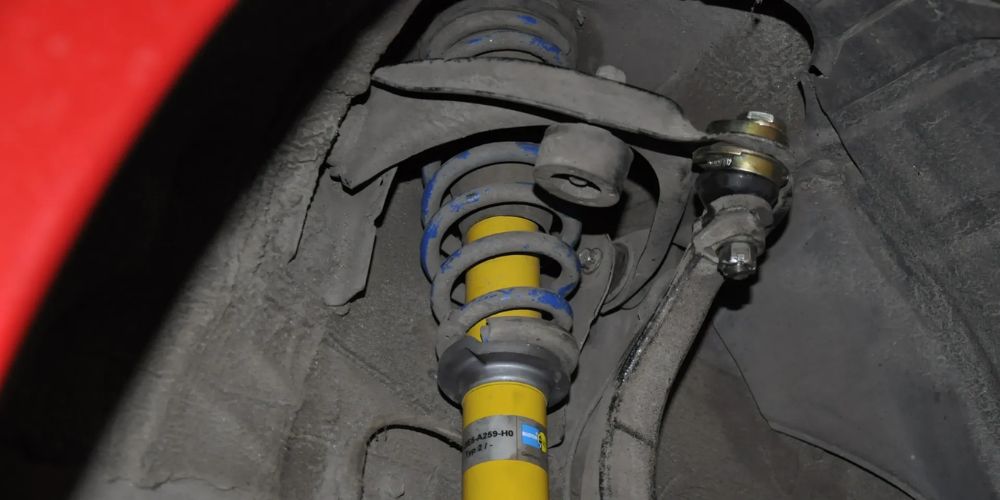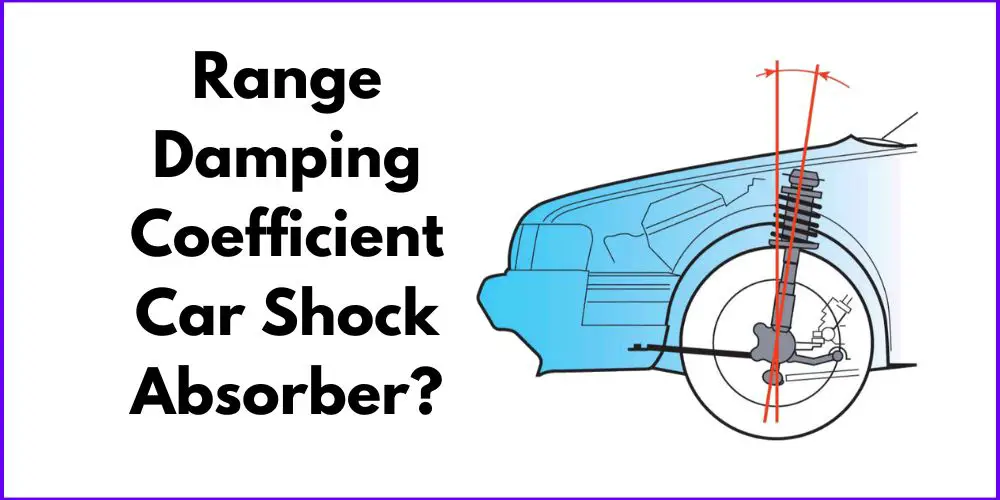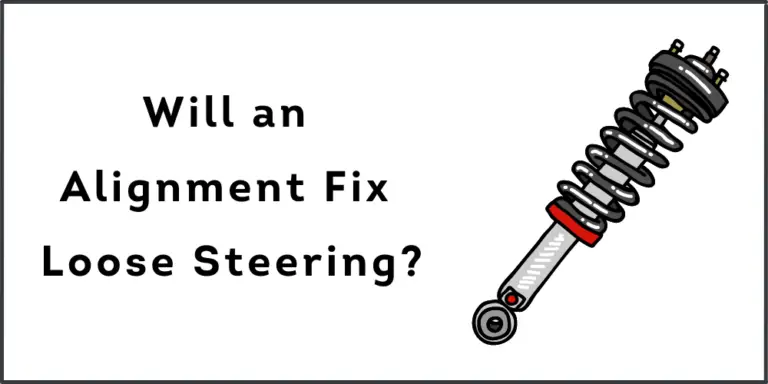Car shock absorbers are essential components of a vehicle’s suspension system, responsible for ensuring a smooth and controlled ride. The damping coefficient, or damping rate, plays a crucial role in regulating the suspension’s movement and absorbing energy from road irregularities. Understanding the importance of the damping coefficient is key to optimizing ride quality, stability, and overall performance. In this blog post, we’ll explore the significance of the damping coefficient for car shock absorbers, its effects on ride quality, and considerations for finding the right balance between performance and comfort. Let’s delve into this fascinating aspect of automotive engineering.
What Is The Range Of Damping Coefficient For Car Shock Absorber?

In car shock absorbers, the damping coefficient typically varies between 0.2 and 0.4, as per the data on (ResearchGate). This range is considered suitable for achieving the desired balance between comfort and control. Additionally, changes in the damping coefficient significantly affect the shape of the unsprung resonance peak, making it a useful indicator for assessing the status of the shock absorbers.
However, the damping coefficient is a vital parameter for car shock absorbers, representing the resistance to suspension movement. It is responsible for maintaining a smooth ride by dissipating energy from road irregularities. The damping coefficient prevents excessive bouncing and contributes to stability and control. Finding the right damping coefficient is essential to balance comfort and performance. Overall, it plays a crucial role in optimizing ride quality, stability, and handling.
Typical Range of Damping Coefficient for Car Shock Absorbers
The damping coefficient in car shock absorbers has a significant impact on ride quality. Let’s explore the effects of the low and high damping coefficient ranges:
- Low Damping Coefficient Range: Below 0.2, shock absorbers provide a softer ride, increasing comfort. However, excessive softness can lead to underdamping, causing instability and reduced handling.
- High Damping Coefficient Range: Above 0.4, shock absorbers offer a firmer suspension, improving stability and handling. However, excessive damping can result in a harsh and uncomfortable ride.
The damping coefficient directly affects ride comfort and can impact vehicle handling and stability. Finding the right balance is crucial for an enjoyable driving experience. Manufacturers carefully tune damping coefficients to achieve optimal performance and comfort.
Impact of Damping Coefficient on Ride Quality
The damping coefficient of car shock absorbers has a significant impact on ride quality. It affects both comfort and vehicle handling. Here’s a brief overview:
- Relationship between damping coefficient and ride comfort: The damping coefficient determines how well the shock absorbers absorb energy from road irregularities. A properly adjusted damping coefficient leads to a smoother and more comfortable ride by minimizing excessive bouncing and harsh movements.
- Effects of improper damping coefficient on vehicle handling and stability: An incorrect damping coefficient can adversely affect vehicle handling and stability. Insufficient damping (low damping coefficient) can result in reduced control and stability, especially during high-speed maneuvers. Excessive damping (high damping coefficient) can make the suspension too stiff, compromising traction and causing a harsh ride.
Factors Affecting Damping Coefficient:
- The velocity of the shock absorber piston: Different piston velocities require different damping characteristics to optimize energy absorption and ride comfort.
- Temperature variations: Fluctuating temperatures can impact the damping fluid’s viscosity and, subsequently, the damping coefficient, potentially affecting ride quality.
- Suspension system design: The design and configuration of the suspension system influence the optimal damping coefficient required for optimal ride quality and handling.
By considering these factors and ensuring an appropriate damping coefficient, drivers can enjoy a comfortable ride while maintaining control and stability. Striking the right balance is crucial for an enhanced driving experience.
FAQs: Range Of Damping Coefficient For Car Shock Absorber
What is the damping coefficient of a shock absorber in a car?
The damping coefficient of a shock absorber is a measure of the force per unit velocity (Ns/m). It determines the resistance the shock absorber provides against the movement of the suspension system, absorbing energy from road irregularities and vibrations.
Are car shock absorbers critically damped?
Yes, car shock absorbers are designed to be critically damped. This means they provide just enough damping to prevent excessive bouncing or harsh movements without causing the system to be overdamped or underdamped.
What is the normal range for the damping coefficient?
The normal range for damping coefficients typically falls between 0% and 50%. This range allows for an optimal balance between comfort and control, ensuring a smooth ride while maintaining stability.
What will too much shock strut dampening do?
Excessive damping, or too much shock strut dampening, can lead to a harsh ride. When the damping force is too strong, the energy generated by road irregularities cannot be effectively absorbed by the spring. This can result in a bumpy and uncomfortable ride.
Final thoughts
In conclusion, the damping coefficient is crucial for the performance and comfort of car shock absorbers. Selecting the appropriate damping coefficient is essential for optimal performance and comfort. Factors such as driving conditions, vehicle weight, and personal preferences should be considered. Advancements in technology offer adaptive damping systems, allowing for real-time adjustments. Understanding the range of damping coefficients and making informed decisions ensures a smooth and controlled ride. Prioritizing the right damping coefficient provides a safer and more enjoyable driving experience.







